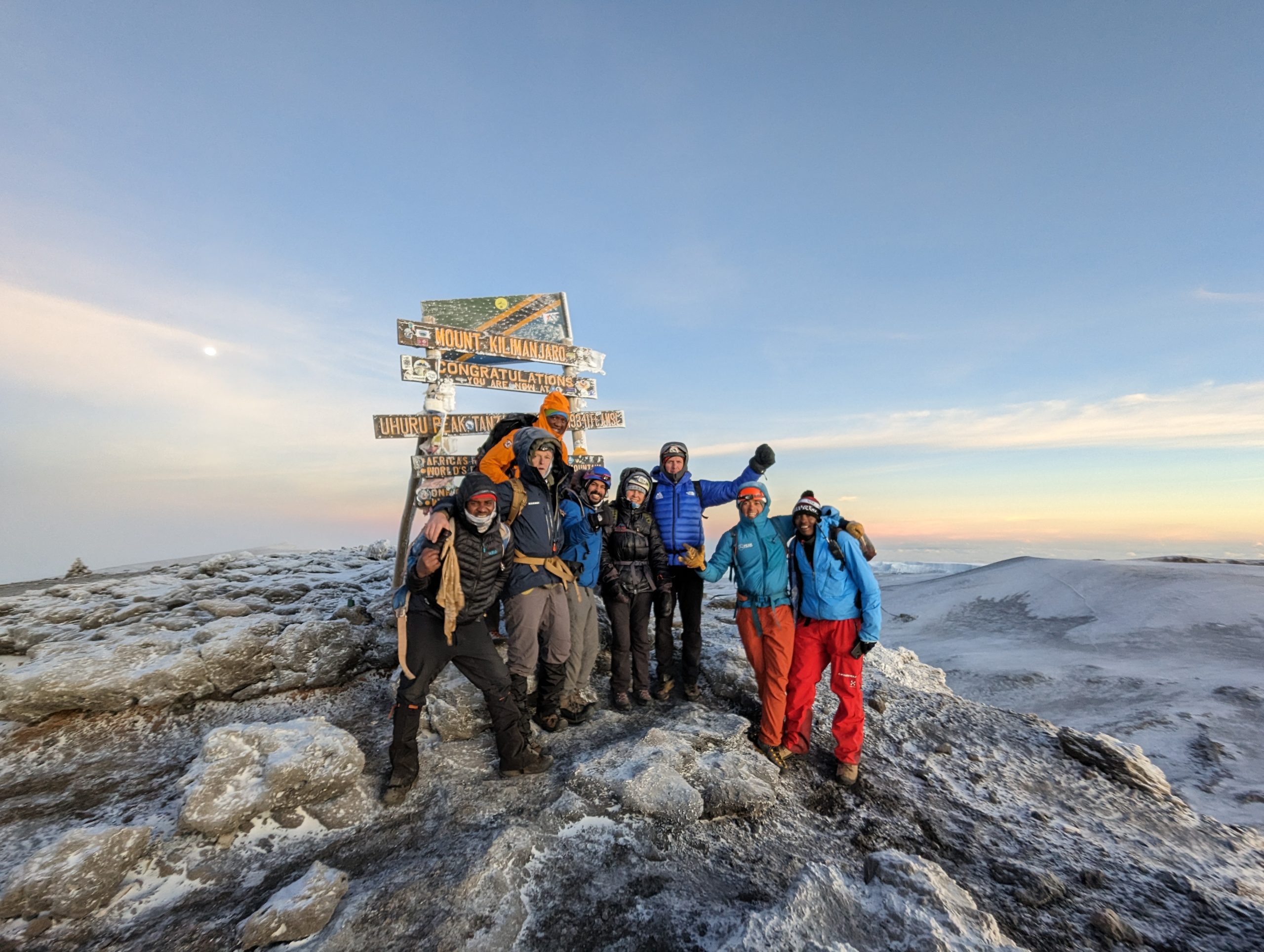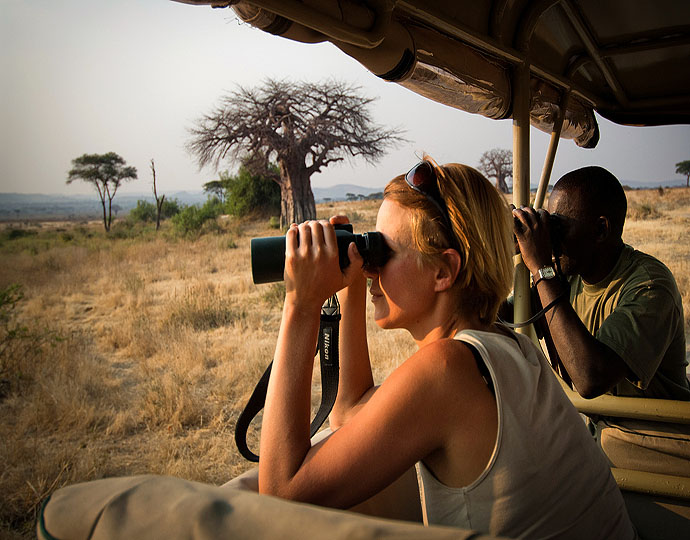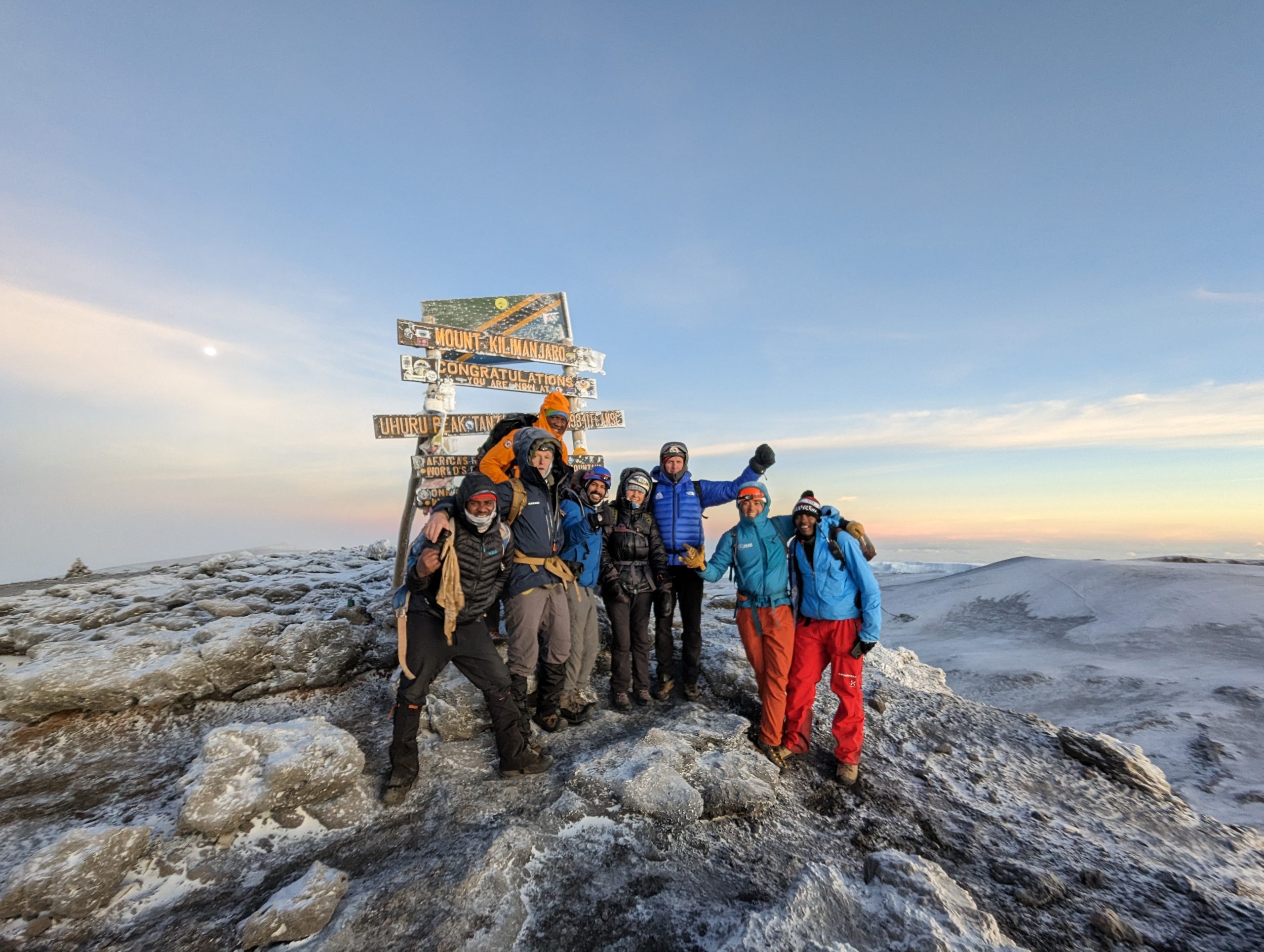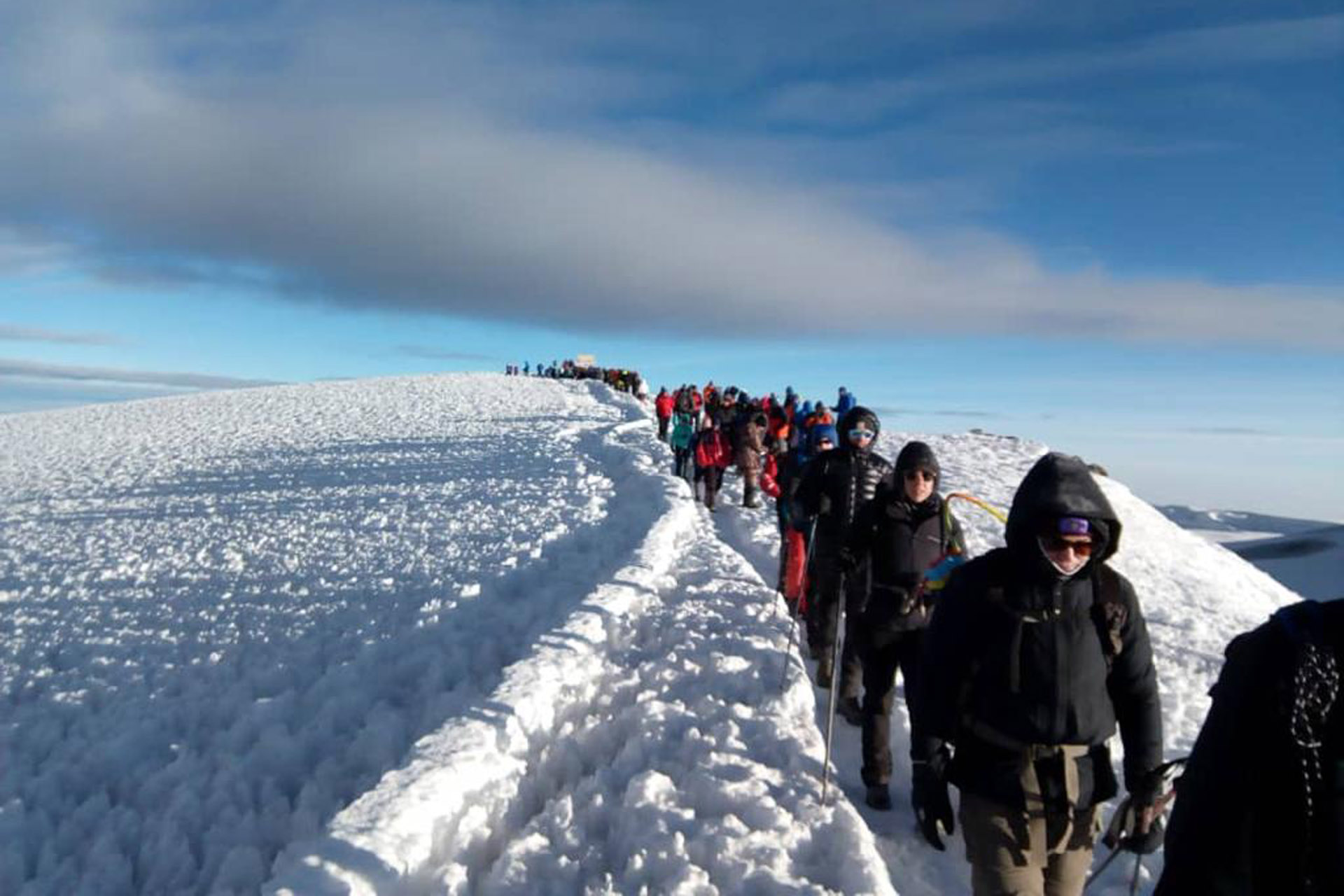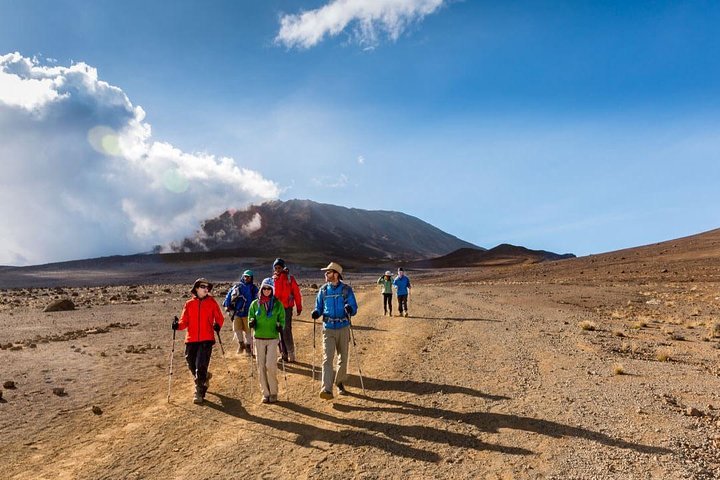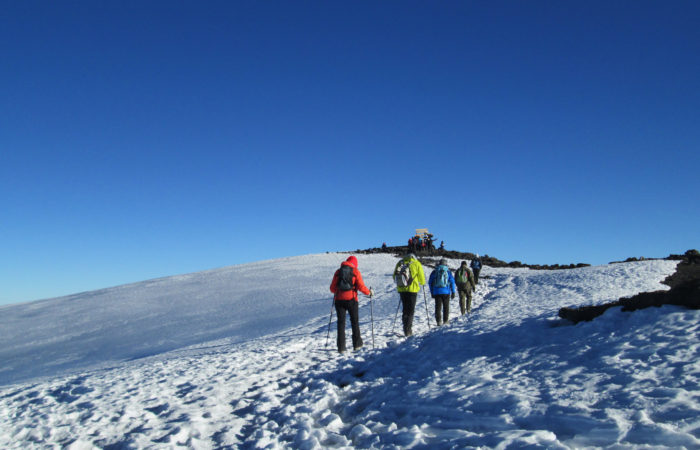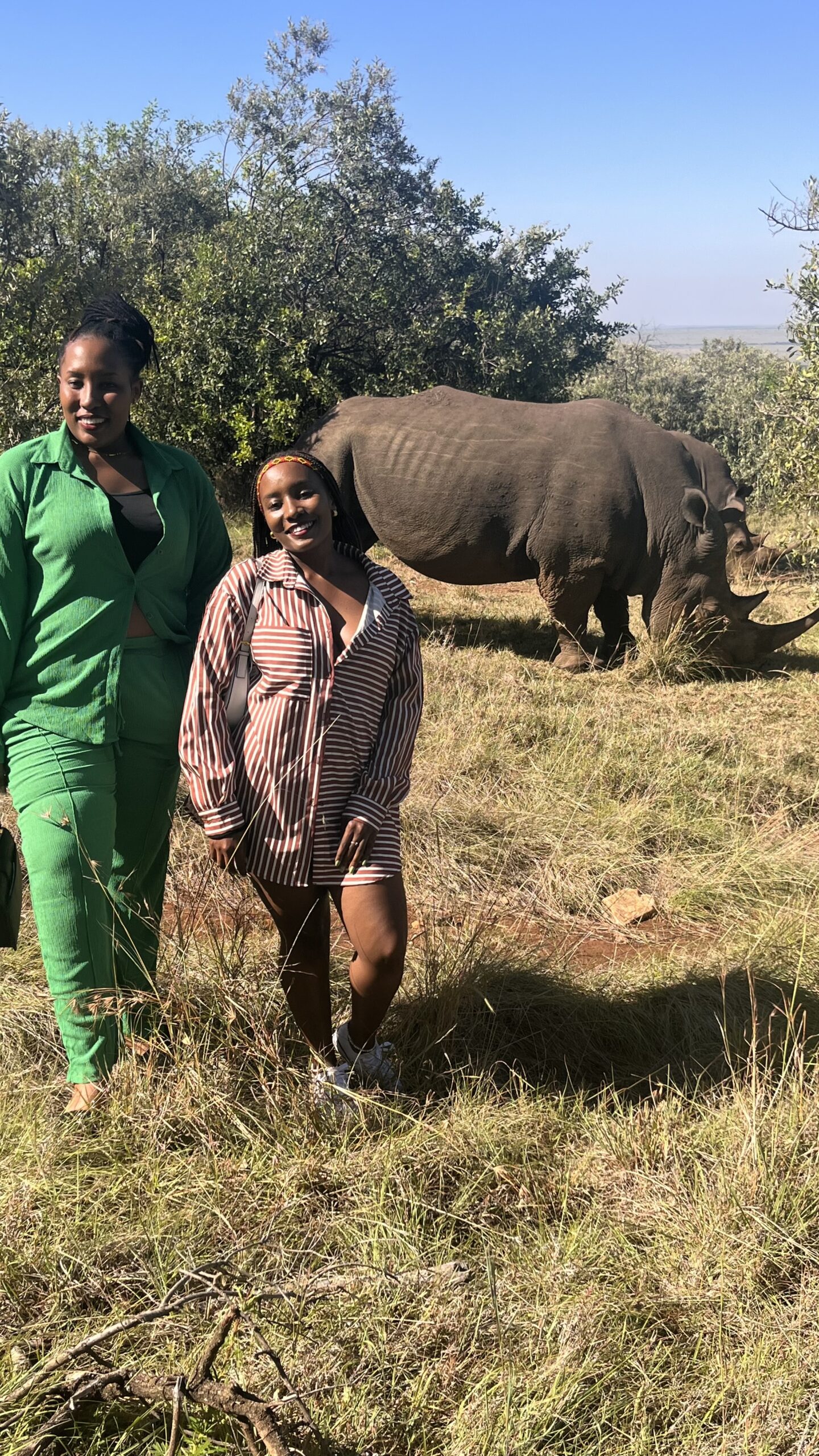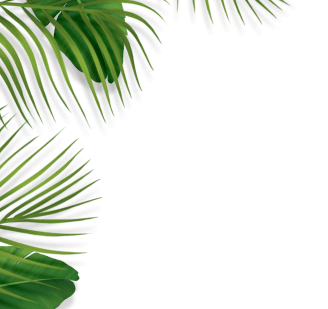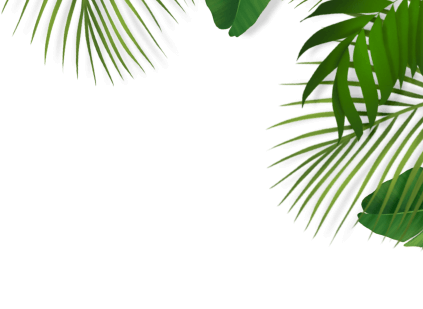$2,265/
Per PersonThe 6 days Rongai route itinerary begins from the northern slopes of Mount Kilimanjaro. It is the perfect route to climb Kilimanjaro during the rainy season as the northern slopes of Mount Kilimanjaro receive very little rain. This 6 days Mount Kilimanjaro climb via the Rongai route will take you to the roof of Africa, the Uhuru peak.
Key Points: Rongai Route
Acclimatization: The Rongai Route provides a moderate acclimatization profile. Though it is considered one of the easier routes up Kilimanjaro due to its gradual ascent, it still offers ample time for climbers to adjust to the altitude.
Scenery: This route is celebrated for its diverse and stunning scenery. Climbers will experience a variety of landscapes, from the dry, arid plains of the Kenyan side, through lush forests and moorlands, to the rugged alpine desert and icy summit of Kilimanjaro.
Traffic: The Rongai Route is less crowded compared to other routes such as Marangu and Machame. This makes it an excellent choice for those seeking a quieter and more solitary trek, particularly during the peak climbing seasons.
Summit Success Rate: The summit success rate on the Rongai Route is relatively high. Its gradual ascent profile and extended duration contribute to better acclimatization, increasing the chances of a successful summit.
Included and Excluded
- Park Fees: Entry, camping, and rescue fees.
- Airport transfers and rides to/from the trailhead.
- Hotel stays before & after the climb.
- All meals and drinking water on the mountain.
- Professional guides, porters and a cook.
- Tents, sleeping mats, dining tent with table and chairs.
- Basic medical kit and emergency oxygen.
- Permits: Climbing permits.
- Travel Costs: Flights to/from Tanzania and visa fees.
- Personal Expenses.
- Tips for the crew.
- Extra hotel nights, optional activities.
- Vaccinations and Medications.
Highlights of the Tour
- Day 1: Arrive Kilimanjaro Airport, transfer to Moshi
- Day 2: Drive to Kilimanjaro Rongai Gate (Nale Moru), Hike to Simba Camp
- Day 3: Hike Simba Camp to Second Cave
- Day 4: Hike Second Cave to Third Cave
- Day 5: Hike Third Cave to Kibo Hut
- Day 6: Hike Kibo Hut to Summit, and down to Horombo Hut
- Day 7: Hike Horombo Hut to trail head, drive to Moshi
- Day 8: Transfer to Kilimanjaro Airport, depart
Itinerary - Day by Day
Drive to the attractive wooden village of Nale Moru (about 2 hours including a stop to get permits at Marangu). After signing in and preparing the porters, you will begin the hike on a wide path that winds through fields of maize and potatoes before entering the pine forest. The track then starts to climb consistently but gently through an attractive forest that shelters a variety of wildlife. The forest begins to thin out and the first camp is at the edge of the moorland zone with extensive views over the Kenyan plains.
- -- Elevation: 2000m/6560ft to 2650m/8700ft
- -- Distance: 6km/4mi
- -- Hiking Time: 3-4 hours
- -- Habitat: Montane Forest
- Meals included: Breakfast, Lunch, Dinner
- Budget Accommodations: Simba Camp
The morning hike is a steady ascent up to the Second Cave with superb views of Kibo and the Eastern ice fields on the crater rim.
- -- Elevation: 2650m/8700ft to 3450m/11,300ft
- -- Distance: 6km/4mi
- -- Walking Time: 3-4 hours
- -- Habitat: Moorland
- Meals included: Breakfast, Lunch, Dinner
- Budget Accommodations: Second Cave Camp
Today we continue our hike from the Second Cave to the Third Cave.
- -- Elevation: 3450m/11,300ft to 3880m/12,700ft
- -- Distance: 9km/5mi
- -- Walking Time: 2-3 hours
- -- Habitat: Semi-desert
- Meals included: Breakfast, Lunch, Dinner
- Budget Accommodations: Third Cave Camp
Hike to Kibo Hut at the bottom of the Kibo crater wall. The remainder of the day is spent resting in preparation for the final ascent and a very early day!
- -- Elevation: 3880m/12,700ft to 4750m/15,600ft
- -- Distance: 5km/3mi
- -- Hiking Time: 3-4 hours
- -- Habitat: Alpine Desert
- Meals included: Breakfast, Lunch, Dinner
- Budget Accommodations: Kibo Hut Camp
Very early in the morning (midnight to 2 am), commence the climb to the summit on steep and heavy scree or snow up to Gilman's Point located on the crater rim (elev 5700m/18,700ft). Continuing, we now ascend to Uhuru Peak, which is the highest point in Africa. There are unbelievable views at every turn. Have your picture taken at the summit to show your friends and family. From here we descend, stopping for lunch and a rest at Kibo before continuing to the Horombo encampment. The beginning of this climb is done in the dark and requires headlamps or flashlights. It will be very cold until you start descending, so you will need all of your warm layers. This is by far the most difficult part of the trek with many switchbacks. Going slowly "pole pole" and an optimistic attitude will get you there!
- -- Elevation: 4700m/15,500ft to 5895m/19,340ft
- -- Down to 3700m/12,200ft
- -- Distance: 6km/4mi up / 15km/9mi down
- -- Hiking Time: 6-8 hours up / 15km/9mi down
- -- Habitat: Alpine Desert
- Meals included: Breakfast, Lunch, Dinner
- Budget Accommodations: Horombo Hut Camp
After breakfast, a steady descent takes us down through moorland to the Mandara Hut. Continue descending through a lush forest path to the National Park gate at Marangu. At lower elevations, it can be wet and muddy. Gaiters and trekking poles will help. Shorts and T-shirts will probably be plenty to wear (keep rain gear and warmer clothing handy). A vehicle will meet you at Marangu village to drive you back to your hotel in Moshi (about 1 hour). Don't forget to tip your guides and porters. It is time for celebration!
- -- Elevation: 3700m/12,200ft to 1700m/5500ft
- -- Distance: 20km/12.5mi
- -- Hiking Time: 4-5 hours
- -- Habitat: Forest
- Meals included: Breakfast
- Mid-Range Accommodations: Chanya Lodge
Book Your Tour
Reserve your ideal trip early for a hassle-free trip; secure comfort and convenience!
